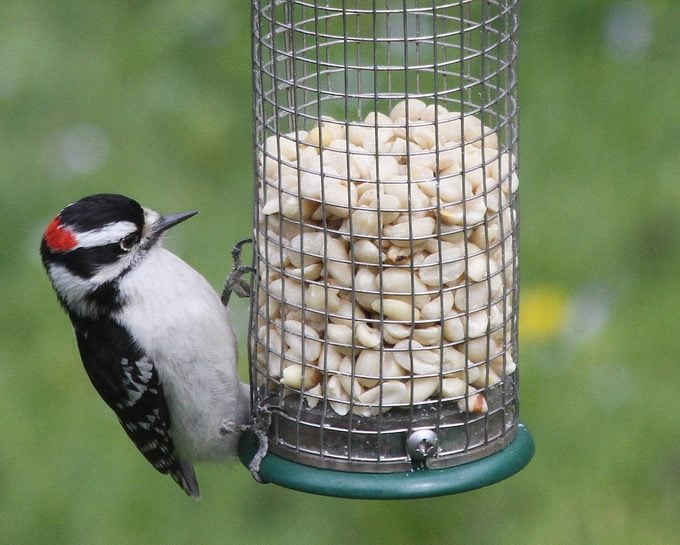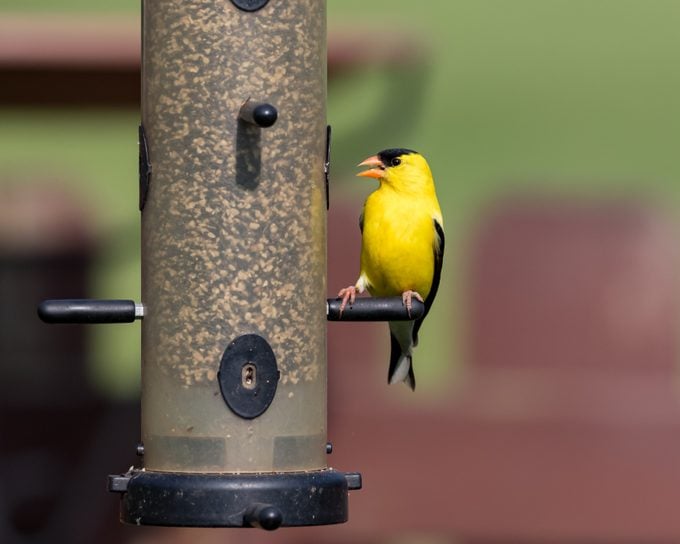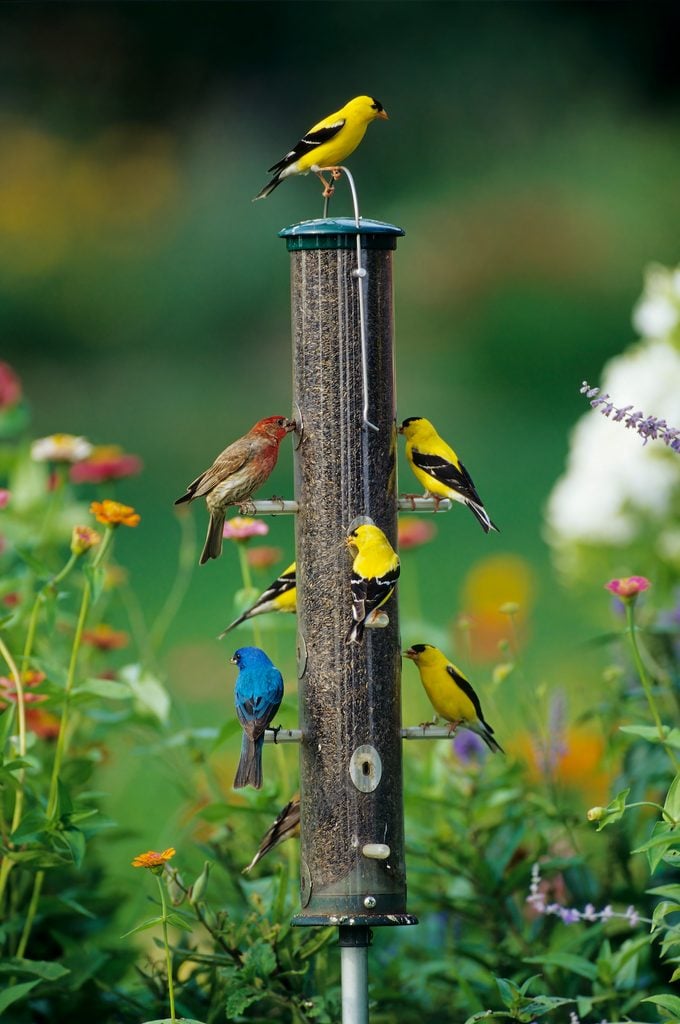How (and How Often) to Clean Bird Feeders
Updated: Nov. 03, 2022
Follow these tips for maintaining seed and suet feeders to keep your backyard birds healthy in every season. Here's what you should use to clean feeders and how often to do it to keep birds healthy.

Watching birds at backyard feeders is one of life’s greatest simple joys—but with that joy comes responsibility. “Just like you wash your own dishes for guests before you have a party, it’s good to clean your bird feeders periodically,” says Emma Grieg, project leader for the Cornell Lab of Ornithology’s Project FeederWatch. “It helps reduce the spread of diseases transmitted by germs left by sick birds.”
A clean bird feeder is essential, and it’s definitely something to keep in mind when you’re buying or building a new one. In addition to how attractive the feeder looks, how sturdy it feels, and how much seed it holds, consider how to clean your bird feeders.
When birds eating at feeders come in close proximity, the spread of bird disease is more likely. Summer heat and rains can cause seed and suet to spoil or mold much quicker, especially if your feeders are in the sun. Accumulated bird droppings also create an unhealthy environment. Follow the steps below to keep your bird feeders clean.
Check out the best bird feeders and birdseed for cardinals.
How Often to Clean Bird Feeders

It’s important to keep feeders and the surrounding area clean to avoid spreading illness such as bird flu. Emma recommends cleaning your seed and suet feeders feeders every two weeks. It’s important to regularly check your birdseed, suet and other foods to ensure they haven’t gone moldy or rancid, especially in hot or wet weather.
Always be on the lookout for signs of disease; a vigilant eye keeps backyard visitors healthy, so they can continue to delight you daily. If you see sick birds, you will need to clean them more frequently or even consider taking your feeders down temporarily. But if you have few visitors and everyone seems healthy, you can clean a little less often.
“One of the most important things you can do is keep your eyes peeled for sick birds, and report them to your local wildlife agencies,” Emma says.
Scrub, Rinse, Repeat

Remove and discard any leftover seed and dust off feeders to remove debris. Spray and wipe feeders with a 10 percent bleach solution (one part bleach to nine parts water) and a stiff brush — an old toothbrush is a perfect choice. A solution of 1 part vinegar to 2 parts water works, too. If a feeder has a lot of caked-on grime, soak it in warm water.
Alternatively, you can use the hottest water possible and dish soap. Either way, rinse the feeders well with clean water once you’re done scrubbing to remove any residue. Allow feeders to dry completely before filling and putting them back up. Wipe down poles and baffles as part of your cleaning routine.
Many birds feed on the ground, so be sure to periodically sweep up and discard the husks and dropped seeds that have accumulated on the ground underneath your feeders. This will also prevent visits from raccoons, mice and other pests.
Check out the 10 types of bird feeders you need in your backyard.
Mild days in early spring are the perfect time to assess the condition of feeders that have been outside all winter. Check for cracks, broken perches or damaged baffles. Repair or replace them if necessary.
Next, follow these tips to learn how to clean hummingbird feeders, how to clean suet cage feeders and how to clean a bird bath.
